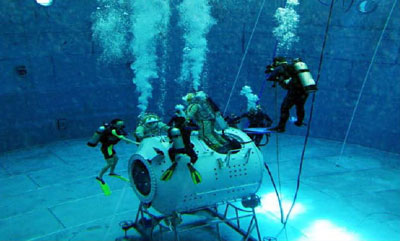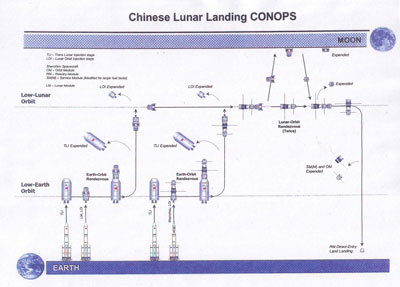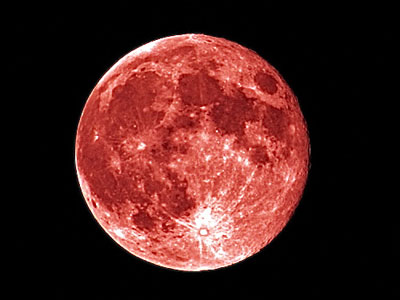History doesn’t echo, it reverbsby Dwayne Day
|
| Claims of a Chinese human lunar program are all built on a solid foundation of marshmallows and Cool Whip, but that has not prevented them from appearing periodically in articles over the past five or six years. |
We saw this again recently with the publication of an opinion piece in the conservative newspaper
In the past, some of these articles claimed that China was going to land a man on the Moon by 2010—in which case we should all immediately turn on CNN. Others have claimed that it would happen by 2017. Others by 2022, and others have said it could happen sometime after 2025.
But whenever a new story appears, a careful reader will note that it never contains any actual evidence to support such a claim. In the past, many of the articles have resulted from bad translation from Chinese to English. For instance, the Chinese have talked about plans to perform a robotic sample return from the Moon by 2017. Western writers have then confused “Moon lander in 2017” with a manned landing by 2017. In addition, some Chinese space officials have stated in press conferences that they could send humans to the Moon, eventually, once they finish what they are actually planning to do, but they have never stated that the country is actively engaged in such an effort. And all too often writers have turned Western speculation about Chinese lunar plans into false evidence that the plans really exist.
Tkacik’s piece is no different. Many people seem to have missed the fact that his was an opinion piece, not a news article, and that many of its assertions lacked substantiating evidence. In particular, take a look at the following paragraph:
Senior Chinese space officials have told their state media that China could be on the moon by 2022 at the outside. Other authoritative Chinese space engineers see a moon landing as a next step in the Tiangong program that will launch three Chinese space stations into Earth orbit between 2011 and 2015. In 2008, NASA scientists told the Bush White House that, with the technology currently available to the Chinese space program, Chinese cosmonauts could be on the moon by 2017.
Three questions that an astute reader should ask about that paragraph: who are the “senior Chinese space officials” mentioned in the first sentence, the “authoritative Chinese space engineers” mentioned in the second sentence, and the “NASA scientists” mentioned in the third sentence? And somebody who did a little more research would discover that Tkacik needed a final sentence: “However, senior Chinese space officials have made it abundantly clear that their goals for at least the next decade center upon developing a space station in low Earth orbit.”
But most of the commentary that followed Tkacik’s article did not bother to ask those questions or dig any deeper. Instead, they let the article press their buttons, appropriated it and assumed that it was true, without questioning if there was any underlying data, then they charged off to make partisan, or pedantic points.
 Chinese human spaceflight training has been focused on operating labs in low Earth orbit, not landing on the Moon. |
China’s space ambitions
The Chinese have in fact talked quite a bit about their future human spaceflight plans, and they do not include the Moon. Although Chinese space officials have stated that they could eventually send humans to the Moon, they never speak about this as if it is an actual, real plan. Over the past several years, Chinese space officials have given presentations on their human spaceflight program and they have made it abundantly clear that their plans for the next decade involve several man-tended mini-space stations—what the Chinese call “space laboratories”—to be followed by a multi-segment space station. They have also made it abundantly clear that their lunar plans for now are entirely robotic.
| When Chinese officials do talk about their space goals, they never say that they are planning on sending humans to the Moon, only that they may study it someday. |
Presentations given by Chinese officials and publicly available for several years now that make this clear. Take, for example, this presentation given by three Chinese space officials at the October 2009 International Astronautical Federation meeting in South Korea. The officials, Wang Zhonggui, Dong Nengli, and Zhai Zhigang, provided significant information on China’s human space program, including their plans for future rendezvous and docking tests with a Tiangong spacecraft, leading up to a large space station by around 2020.
What their presentation also indicated was that only in the “third step” of China’s human spaceflight program will they begin to study the possibility of a human lunar mission. This will occur after they have mastered rendezvous and docking technologies, launched and operated a space laboratory, and built and operated a space station. Because the space station is not scheduled to occur before 2020, the Chinese do not plan on even studying a lunar mission until then.
Statements by other Chinese space officials have added other details about their more near-term plans, such as their plans to launch up to three Tiangong “space laboratories” over a period of about five years, and to conduct several rendezvous and docking missions with each of them. The October 2009 presentation is similar to one presented by a Chinese space official a year earlier at an IAF meeting in Glasgow, Scotland.
Another presentation in 2007 on the Chinese lunar program focuses entirely on the country’s robotic mission plans. These plans are also logical and measured: orbit the Moon, then conduct a soft landing and roving, then eventually conduct a sample return mission.
The Chinese are not completely transparent about their civil space plans, but they have actually provided a substantial amount of information about their civilian space goals. They are more open than the Soviet Union was during the Cold War. And when they do talk about their space goals, they never say that they are planning on sending humans to the Moon, only that they may study it someday. Anybody making the assertion that the Chinese do have plans for sending humans to the Moon should at least provide the equivalent data to support it, rather than basing their argument on mistranslated news conferences, or the paranoid view that you know when a Communist is lying because his lips are moving.
The image in the mirror
The public reaction to Tkacik’s op-ed piece fell into several categories. Some people noted that there was really no evidence to support his assertions. Others, usually conservatives, viewed the situation in more alarmist terms, and used it to criticize the Obama administration. In their view, the United States is going to allow Communist China to “beat” America to the Moon. For them, this is at least a matter of national pride, if not strategic importance.
But there were others who jumped on another aspect of Tkacik’s article because it allowed them to revive one of their standard critiques of NASA’s human exploration planning. They seized upon Tkacik’s claim that NASA officials had determined that China would send humans to the Moon using several EELV-class launch vehicles. One of the perpetual arguments among space activists has been whether or not a heavy-lift launch vehicle is required for human missions beyond low Earth orbit. Every major review of the American space program over the past several decades has concluded that heavy-lift (however defined) is at least highly desirable for going beyond low Earth orbit. Some space activists vehemently dispute this and they immediately focused on this part of Tkacik’s article.
| The consistent theme of the “China is going to the Moon” story is that facts don’t matter. |
Some commentators claimed that Tkacik’s comment about NASA’s evaluation of China’s lunar plans demonstrated NASA’s hypocrisy—while NASA insisted that heavy-lift was necessary for the Moon, the agency was apparently claiming that China did not require it. But this claim is disingenuous. NASA’s lunar plans requiring very heavy-lift vehicles were never billed as the “only” way to reach the Moon, simply the “best” way given NASA’s initial starting criteria. If the agency’s goals had been different (such as doing the mission faster, with less mass sent to the lunar surface), they could have chosen a path to the Moon that did not require heavy-lift. What this example really shows is the Pavlovian response among some members of the space activist community to any mention of heavy-lift rockets—it doesn’t matter the context, or the accuracy of the discussion, all someone has to do is mention the subject and heads pop up like prairie dogs who hear a noise.
Some other commentators seem to have been more confused, thinking that this was actually the method that the Chinese have already chosen for their lunar program, even though there’s no evidence of a Chinese lunar program. What nobody seems to have asked is what “NASA experts” and what NASA study Tkacik was actually referring to.
 A NASA illustration of a notional Chinese manned Moon mission, not China’s actual plans. (View larger version) |
Several years ago, NASA administrator Michael Griffin was playing up the threat of China sending humans to the Moon before the United States. NASA was actually charged by Congress with presenting an analysis of the Chinese lunar program. But when the deadline came, reportedly all that NASA presented to Congress was a collection of press clippings, not technical analysis. However, in late 2008, former NASA official Scott Pace presented a chart at a public forum on China’s space ambitions. It showed how China might send humans to the Moon. According to Pace, NASA drew this up at Griffin’s direction to demonstrate what China could do if they wanted to, but it was not part of an extensive NASA study. Some Chinese space experts have also written about a potential lunar exploration plan utilizing medium-size boosters, but there remain no indications that they plan to do it this way, or that such paper studies are even valid.
The consistent theme of the “China is going to the Moon” story is that facts don’t matter. The people who get excited about this story do not care that there is no evidence to support it. What matters are the chips on their shoulders. They can use the story to criticize Obama, to criticize NASA, to defend Constellation, to attack Constellation, or to once again revive the argument about the non-necessity of heavy-lift rockets. But the facts are irrelevant, because it is personal agendas, not events, that are driving the story.
The story will fade soon, but only for awhile. Give it another year and we’ll hear it reverberate, as various people start beating their drums again, to their own tune.
